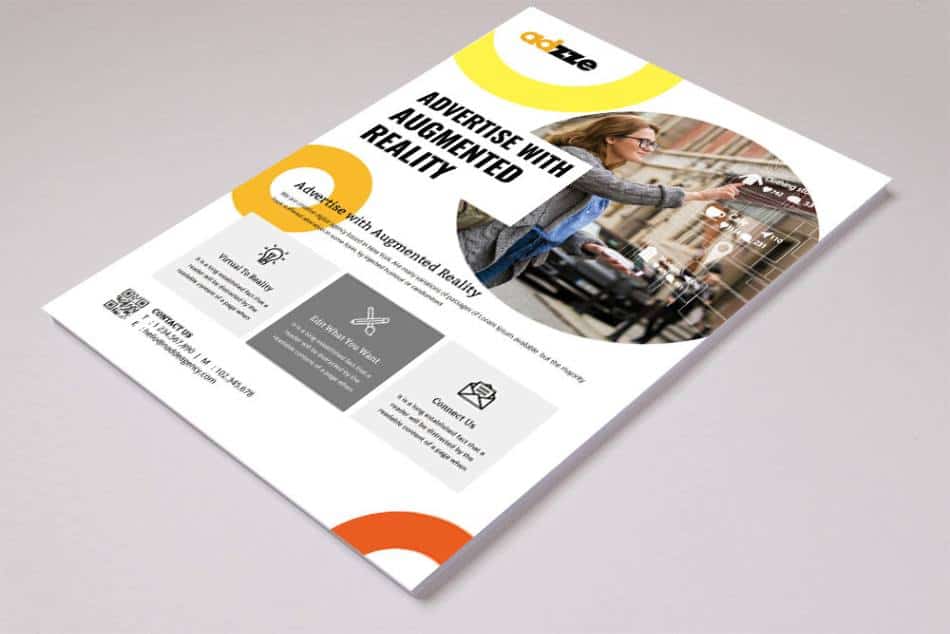Magazine advertisements have a great impact since they can involve readers in a tactile, immersive manner that internet ads cannot usually copy. Although digital media still rules, print magazines offer a reliable setting, especially for niche businesses where readers actively search for in-depth material.
Important Benefits of Magazine Advertisement
Authority and Reliance: Particularly in highly considered sectors like banking or healthcare, Magazine advertisement are sometimes perceived as more reliable than online ones.
Magazines may target particular groups, which allows companies in niche markets to have their message in front of the proper eyes.
Readers of print publications often interact more with the content, spend more time reading and interacting with adverts than the brief attention paid to internet ads.
Calculating Magazine Advertisement ROI
Comparing Magazine advertisements’ return on investment (ROI) to digital platforms with direct tracking can make calculations difficult. But companies in non-traditional sectors have created successful strategies to evaluate the performance of their print initiatives:
Inquiries and Lead Generation: Many non-traditional businesses base their sales on leads. QR tags, personalized URLs (PURLs), or dedicated phone lines allow companies to track queries related to the advertisements that abound in magazine adverts. Monitoring these leads allows companies to estimate the number of inquiries that turn into sales, creating a straight cost-per-lead statistic.
Awareness: The ROI of magazine advertisement is assessed in many sectors in terms of instantaneous sales and brand awareness. Tracking brand recall polls and keeping an eye on the company’s reputation inside a particular market segment helps businesses evaluate how print advertising shapes general brand positioning.
Increase in Sales Lift: The sales lift—the small rise in sales directly attributed to the ad campaign—is a popular yardstick for evaluating magazine ad return on investment. Running regional Magazine advertisements and tracking sales in specific areas allows marketers to separate the influence of print advertising from that of other areas deprived of the ads.
Economically Conscious Magazine Ad Strategies
Choose the Correct Magazine: Choosing the correct magazine is the first and most crucial step small businesses should do. Although big, national magazines could be beyond reach financially, local or niche periodicals can be quite valuable. Emphasize publications that fit your particular market and complement your company objectives. Advice: Investigate the magazine’s readership composition. Make sure the readers of the publication fit your intended market. For example, advertising in a community magazine instead of a national gastronomic periodical would help a nearby bakery.
Bargain for Rates and Ad Placement: Negotiating with magazine publishers is a sometimes disregarded tactic. Although small businesses might not have big budgets, publications—especially local ones—may be ready to offer reduced pricing for particular ad spots or times of year. Ask for seasonal sales or bulk reductions without feeling embarrassed. Advice: Experiment with the location of adverts. Although a back-cover location could cost much more than an inside-page advertisement, the latter can show great results at a far lower cost.
Utilize smaller ad sizes: Full-page magazine advertising has a greater cost tag, even if it is visually striking. By choosing smaller ad sizes like half-page or quarter-page advertising, which can still be quite successful, especially in niche or local periodicals where competition for attention is less intense, smaller firms can save noticeably. Use strong images and a succinct, interesting message to maximize the impact of tiny advertising areas.
Run advertisements in Special Issues: Special issues, including themed books or seasonal editions, might offer focused opportunities at possibly reduced prices. For a gardening supplies company, for instance, advertising in a magazine’s spring or summer edition might be more pertinent to its readers. Tip: Although both readers and advertisers pay greater attention to special issues, putting advertising in off-season editions helps smaller companies uncover opportunity gaps.
Calculating CPM for Magazine Advertisement
The Cost Per Thousand Impressions (CPM) is one of the main indicators of a magazine ad campaign’s cost efficiency. A common advertising metric, CPM allows companies to gauge their expenses in reaching 1,000 possible consumers’ views.
Calculating CPM requires a formula. Let’s dissect this:
Cost: The whole total of the advertisement space you are paying for in the publication.
Views/Impressions: Total Circulation/Readership: This is the total number of readers the magazine attracts, as stated in its media kit.
Estimated CPM: Assume a local company runs a half-page advertisement in a regional magazine with 50,000 circulation. The ad will cost $2,500. In this instance, the CPM is $50, which implies the company pays $50 for every 1,000 impressions.
Reducing CPM and optimizing ROI
Small firms must maximize their CPM if magazine advertising is to be more affordable. The following will help you to reach this:
Aimed Publications with High Engagement: Though their circulation is not very great, magazines with highly engaged audience can show better return on investment. Specialty magazines catering to specialist populations, for instance, may have less readers but those readers are often more interested in the content, therefore they are more likely to interact with adverts. For instance, a tiny organic skincare firm placing an advertisement in a general lifestyle magazine with a far larger readership will probably get less engagement than one advertising in a magazine like Clean Eating.
Emphasize Ad Frequency: Running ads more often in the same newspaper can produce greater results since repeated exposure raises the possibility of reader interaction. This approach can also reduce your total CPM since many publications offer cheaper pricing to advertisers committing to several issues. Ask the publisher about frequency discounts or package offers to maintain your CPM as low as feasible over time.
Measure using QR codes or promo codes: Following ROI is crucial. Small companies should incorporate QR codes, special landing page URLs, or promo codes into their magazine adverts. These instruments enable you to count the number of readers reacting to the advertisement easily, guiding your assessment of whether the campaign produces value. Tip: Measuring response rates helps determine how many purchases directly resulted from the magazine ad and, hence, evaluate the actual campaign return on investment.
Maximizing ROI: Does Magazine Advertising Make Sense for Small Businesses?
Magazine advertising may be a quite successful approach for small businesses to reach certain, interested audiences—but only if the campaign is carried out cost-effectively. Small firms can maximize their advertising dollars by carefully choosing magazines, negotiating pricing, and tracking CPM, therefore attaining remarkable brand visibility.
While digital ads show immediate effects, print ads give a long-lasting impact that keeps their brand top of mind for weeks or even months following publication, small businesses commonly find. Magazine advertisements offer the credibility and interaction needed to support faster-paced digital initiatives when they are included in a larger cross-platform approach.
While print advertising has advantages, In-Hand Advertising pushes your brand into your customers’ physical environment, enhancing its power. This approach makes a lasting connection, whether using bar coasters, pizza toppings, or coffee sleeves. Interested in learning how it works? Watch the video below to see how in-hand advertising may change your campaigns!






